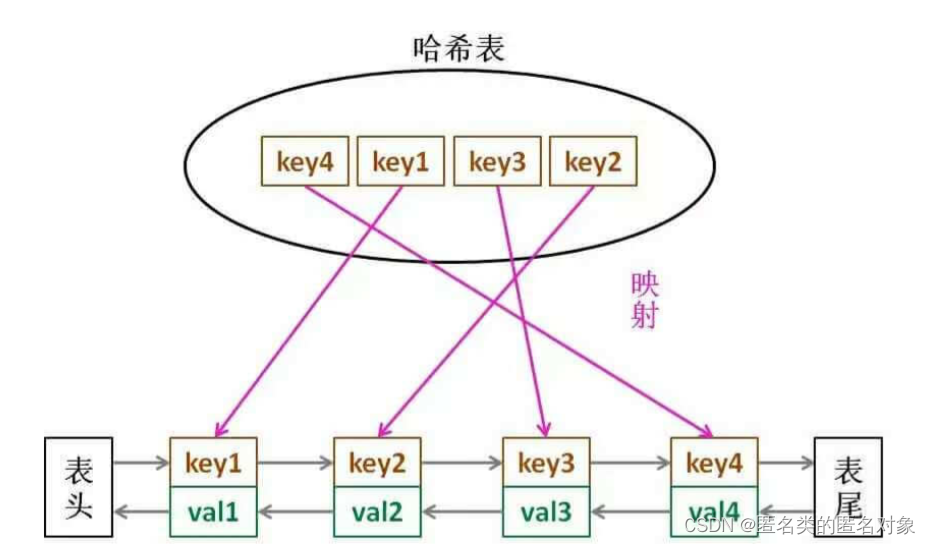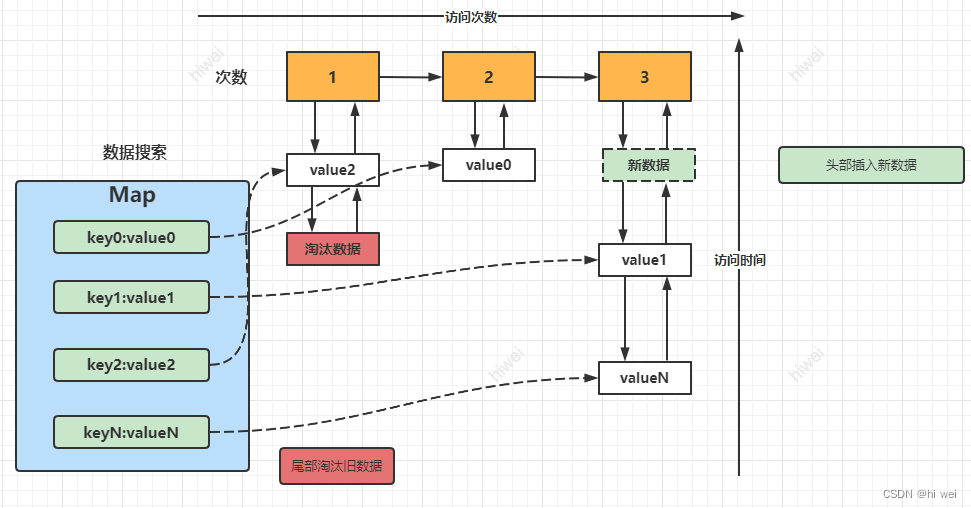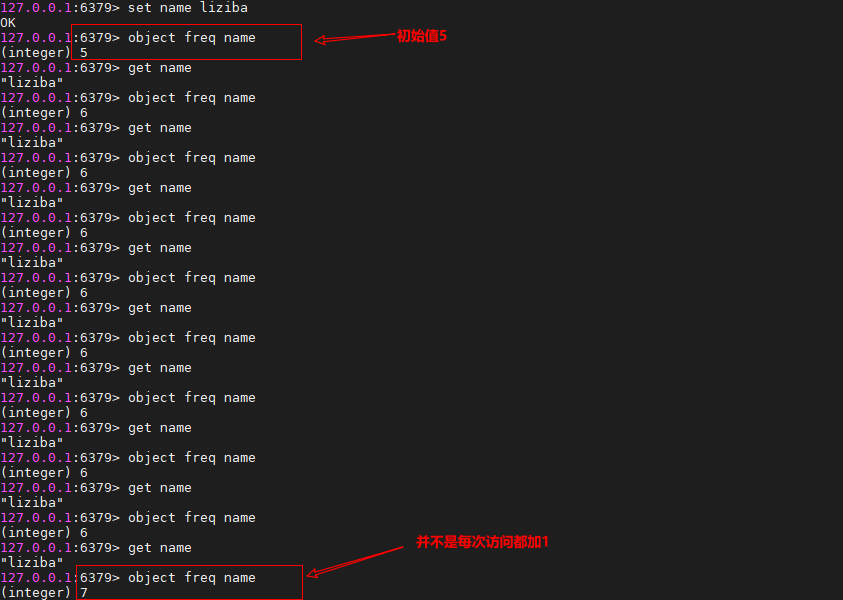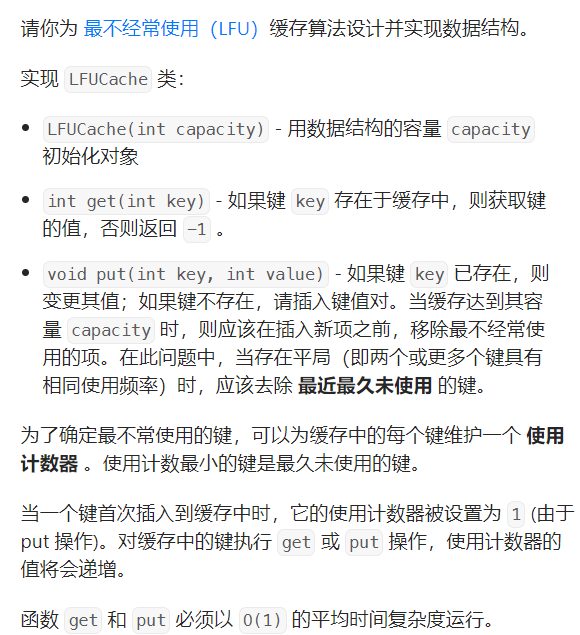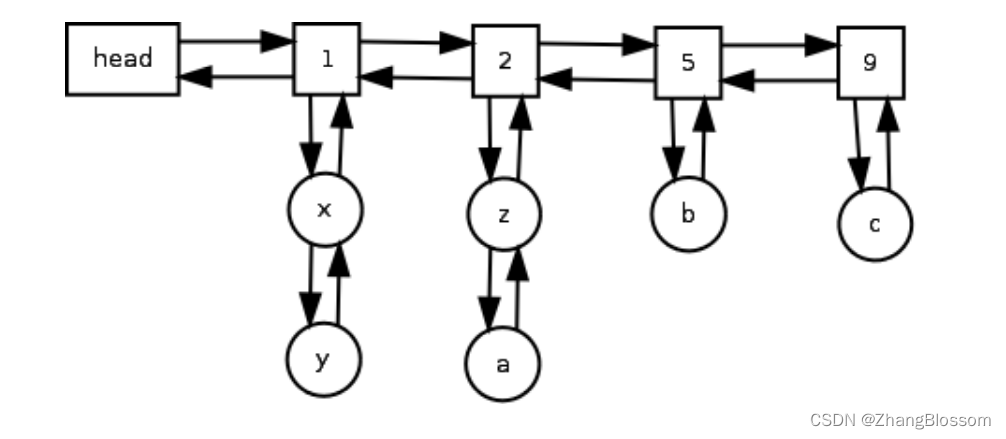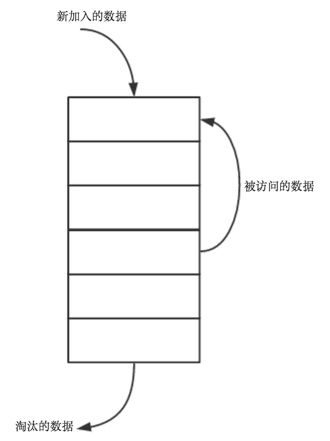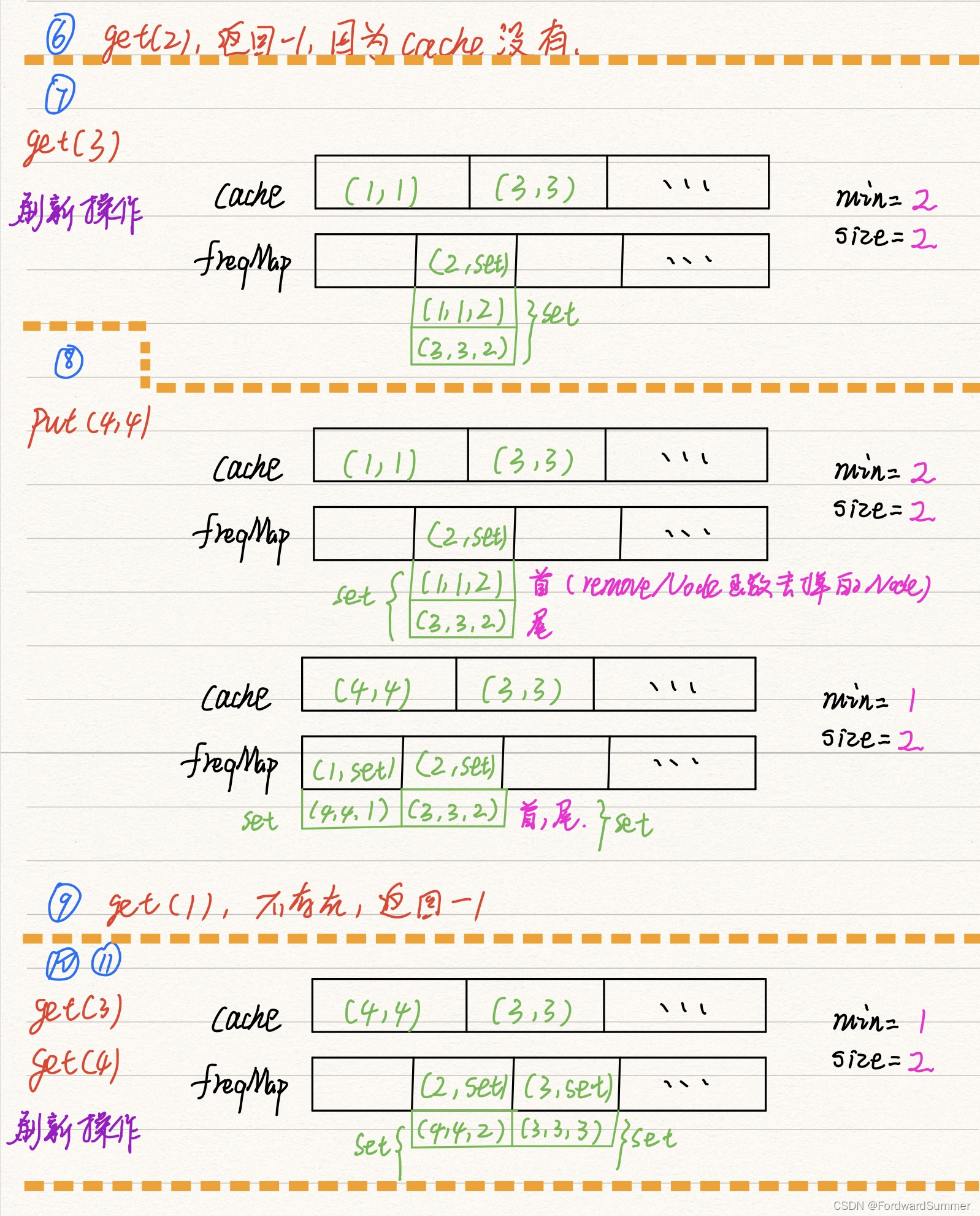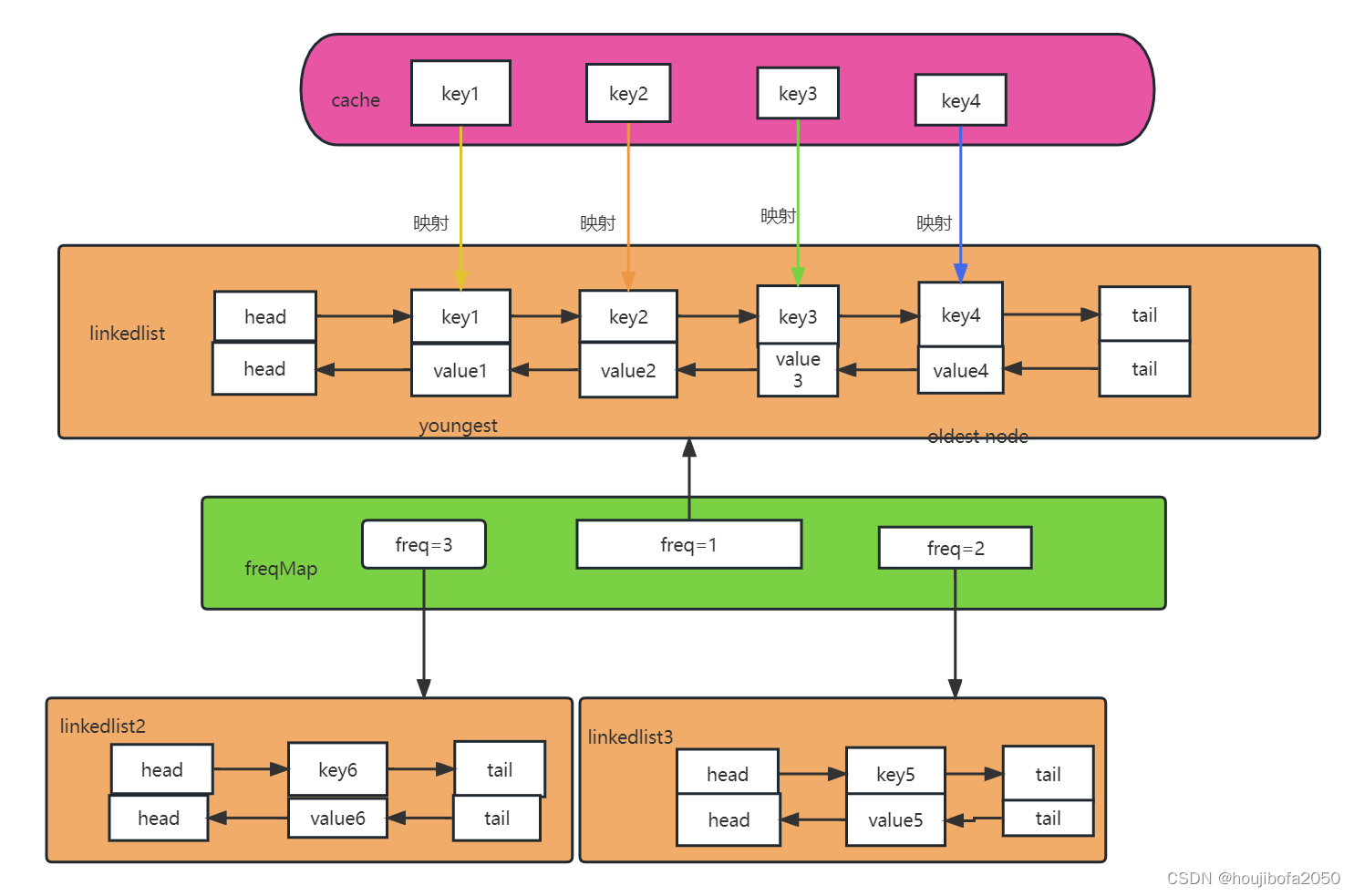前言
最近刷力扣题,对于我这种 0 基础来说,真的是脑壳疼啊。这个月我估计都是中等和困难题,没有简单题了。
幸好,力扣上有各种大牛给写题解。看着他们行云流水的代码,真的是羡慕不已。让我印象最深刻的就是人称 “甜姨” 的知心姐姐,还有名叫威哥的大哥。几乎每天他们的题解我都是必看的。
甜姨的题解,虽然姿势很帅,但是对于我这种新手来说,感觉不是太友好,因为思路写的太少,不是很详细。所以,每次我看不明白的时候,都得反复看好几遍,才能想明白她代码中的思路。
上个周末的一道题是,让实现一个 LFU 缓存算法。经过我几个小时的研究(其实,应该有8个小时以上了,没得办法啊,菜就得多勤奋咯),终于把甜姨的思路整明白了。为了便于以后自己复习,就把整个思路记下来了,并配上图示和大量代码注释,我相信对于跟我一样的新手来说,是非常友好的。
经过甜姨同意,参考来源我也会贴出来:https://leetcode-cn.com/problems/lfu-cache/solution/java-13ms-shuang-100-shuang-xiang-lian-biao-duo-ji/
虽然,力扣要求是用时间复杂度 O(1) 来解,但是其它方式我感觉也有必要了解,毕竟是一个由浅到深的过程,自己实现一遍总归是好的。因此,我就把五种求解方式,从简单到复杂,都讲一遍。
LFU实现
力扣原题描述如下:
请你为 最不经常使用(LFU)缓存算法设计并实现数据结构。它应该支持以下操作:get 和 put。get(key) - 如果键存在于缓存中,则获取键的值(总是正数),否则返回 -1。
put(key, value) - 如果键不存在,请设置或插入值。当缓存达到其容量时,则应该在插入新项之前,使最不经常使用的项无效。在此问题中,当存在平局(即两个或更多个键具有相同使用频率)时,应该去除 最近 最少使用的键。
「项的使用次数」就是自插入该项以来对其调用 get 和 put 函数的次数之和。使用次数会在对应项被移除后置为 0 。示例:LFUCache cache = new LFUCache( 2 /* capacity (缓存容量) */ );cache.put(1, 1);
cache.put(2, 2);
cache.get(1); // 返回 1
cache.put(3, 3); // 去除 key 2
cache.get(2); // 返回 -1 (未找到key 2)
cache.get(3); // 返回 3
cache.put(4, 4); // 去除 key 1
cache.get(1); // 返回 -1 (未找到 key 1)
cache.get(3); // 返回 3
cache.get(4); // 返回 4来源:力扣(LeetCode)
链接:https://leetcode-cn.com/problems/lfu-cache就是要求我们设计一个 LFU 算法,根据访问次数(访问频次)大小来判断应该删除哪个元素,get和put操作都会增加访问频次。当访问频次相等时,就判断哪个元素是最久未使用过的,把它删除。
因此,这道题需要考虑两个方面,一个是访问频次,一个是访问时间的先后顺序。
方案一:使用优先队列
思路:
我们可以使用JDK提供的优先队列 PriorityQueue 来实现 。 因为优先队列内部维护了一个二叉堆,即可以保证每次 poll 元素的时候,都可以根据我们的要求,取出当前所有元素的最大值或是最小值。只需要我们的实体类实现 Comparable 接口就可以了。
因此,我们需要定义一个 Node 来保存当前元素的访问频次 freq,全局的自增的 index,用于比较大小。然后定义一个 Map<Integer,Node> cache ,用于存放元素的信息。
当 cache 容量不足时,根据访问频次 freq 的大小来删除最小的 freq 。若相等,则删除 index 最小的,因为index是自增的,越大说明越是最近访问过的,越小说明越是很长时间没访问过的元素。
因本质是用二叉堆实现,故时间复杂度为O(logn)。
public class LFUCache4 {public static void main(String[] args) {LFUCache4 cache = new LFUCache4(2);cache.put(1, 1);cache.put(2, 2);// 返回 1System.out.println(cache.get(1));cache.put(3, 3); // 去除 key 2// 返回 -1 (未找到key 2)System.out.println(cache.get(2));// 返回 3System.out.println(cache.get(3));cache.put(4, 4); // 去除 key 1// 返回 -1 (未找到 key 1)System.out.println(cache.get(1));// 返回 3System.out.println(cache.get(3));// 返回 4System.out.println(cache.get(4));}//缓存了所有元素的nodeMap<Integer,Node> cache;//优先队列Queue<Node> queue;//缓存cache 的容量int capacity;//当前缓存的元素个数int size;//全局自增int index = 0;//初始化public LFUCache4(int capacity){this.capacity = capacity;if(capacity > 0){queue = new PriorityQueue<>(capacity);}cache = new HashMap<>();}public int get(int key){Node node = cache.get(key);// node不存在,则返回 -1if(node == null) return -1;//每访问一次,频次和全局index都自增 1node.freq++;node.index = index++;// 每次都重新remove,再offer是为了让优先队列能够对当前Node重排序//不然的话,比较的 freq 和 index 就是不准确的queue.remove(node);queue.offer(node);return node.value;}public void put(int key, int value){//容量0,则直接返回if(capacity == 0) return;Node node = cache.get(key);//如果node存在,则更新它的value值if(node != null){node.value = value;node.freq++;node.index = index++;queue.remove(node);queue.offer(node);}else {//如果cache满了,则从优先队列中取出一个元素,这个元素一定是频次最小,最久未访问过的元素if(size == capacity){cache.remove(queue.poll().key);//取出元素后,size减 1size--;}//否则,说明可以添加元素,于是创建一个新的node,添加到优先队列中Node newNode = new Node(key, value, index++);queue.offer(newNode);cache.put(key,newNode);//同时,size加 1size++;}}//必须实现 Comparable 接口才可用于排序private class Node implements Comparable<Node>{int key;int value;int freq = 1;int index;public Node(){}public Node(int key, int value, int index){this.key = key;this.value = value;this.index = index;}@Overridepublic int compareTo(Node o) {//优先比较频次 freq,频次相同再比较indexint minus = this.freq - o.freq;return minus == 0? this.index - o.index : minus;}}
}
方案二:使用一条双向链表
思路:
只用一条双向链表,来维护频次和时间先后顺序。那么,可以这样想。把频次 freq 小的放前面,频次大的放后面。如果频次相等,就从当前节点往后遍历,直到找到第一个频次比它大的元素,并插入到它前面。(当然,如果遍历到了tail,则插入到tail前面)这样可以保证同频次的元素,最近访问的总是在最后边。
因此,总的来说,最低频次,并且最久未访问的元素肯定就是链表中最前面的那一个了。这样的话,当 cache容量满的时候,直接把头结点删除掉就可以了。但是,我们这里为了方便链表的插入和删除操作,用了两个哨兵节点,来表示头节点 head和尾结点tail。因此,删除头结点就相当于删除 head.next。
PS:哨兵节点只是为了占位,实际并不存储有效数据,只是为了链表插入和删除时,不用再判断当前节点的位置。不然的话,若当前节点占据了头结点或尾结点的位置,还需要重新赋值头尾节点元素,较麻烦。
为了便于理解新节点如何插入到链表中合适的位置,作图如下:

代码如下:
public class LFUCache {public static void main(String[] args) {LFUCache cache = new LFUCache(2);cache.put(1, 1);cache.put(2, 2);// 返回 1System.out.println(cache.get(1));cache.put(3, 3); // 去除 key 2// 返回 -1 (未找到key 2)System.out.println(cache.get(2));// 返回 3System.out.println(cache.get(3));cache.put(4, 4); // 去除 key 1// 返回 -1 (未找到 key 1)System.out.println(cache.get(1));// 返回 3System.out.println(cache.get(3));// 返回 4System.out.println(cache.get(4));}private Map<Integer,Node> cache;private Node head;private Node tail;private int capacity;private int size;public LFUCache(int capacity) {this.capacity = capacity;this.cache = new HashMap<>();/*** 初始化头结点和尾结点,并作为哨兵节点*/head = new Node();tail = new Node();head.next = tail;tail.pre = head;}public int get(int key) {Node node = cache.get(key);if(node == null) return -1;node.freq++;moveToPostion(node);return node.value;}public void put(int key, int value) {if(capacity == 0) return;Node node = cache.get(key);if(node != null){node.value = value;node.freq++;moveToPostion(node);}else{//如果元素满了if(size == capacity){//直接移除最前面的元素,因为这个节点就是频次最小,且最久未访问的节点cache.remove(head.next.key);removeNode(head.next);size--;}Node newNode = new Node(key, value);//把新元素添加进来addNode(newNode);cache.put(key,newNode);size++;}}//只要当前 node 的频次大于等于它后边的节点,就一直向后找,// 直到找到第一个比当前node频次大的节点,或者tail节点,然后插入到它前面private void moveToPostion(Node node){Node nextNode = node.next;//先把当前元素删除removeNode(node);//遍历到符合要求的节点while (node.freq >= nextNode.freq && nextNode != tail){nextNode = nextNode.next;}//把当前元素插入到nextNode前面node.pre = nextNode.pre;node.next = nextNode;nextNode.pre.next = node;nextNode.pre = node;}//添加元素(头插法),并移动到合适的位置private void addNode(Node node){node.pre = head;node.next = head.next;head.next.pre = node;head.next = node;moveToPostion(node);}//移除元素private void removeNode(Node node){node.pre.next = node.next;node.next.pre = node.pre;}class Node {int key;int value;int freq = 1;//当前节点的前一个节点Node pre;//当前节点的后一个节点Node next;public Node(){}public Node(int key ,int value){this.key = key;this.value = value;}}
}可以看到不管是插入元素还是删除元素时,都不需要额外的判断,这就是设置哨兵节点的好处。
由于每次访问元素的时候,都需要按一定的规则把元素放置到合适的位置,因此,元素需要从前往后一直遍历。所以,时间复杂度 O(n)。
方案三:用 LinkedHashSet维护频次链表
思路:
我们不再使用一条链表,同时维护频次和访问时间了。此处,换为用 map 键值对来维护,用频次作为键,用当前频次对应的一条具有先后访问顺序的链表来作为值。它的结构如下:
Map<Integer, LinkedHashSet<Node>> freqMap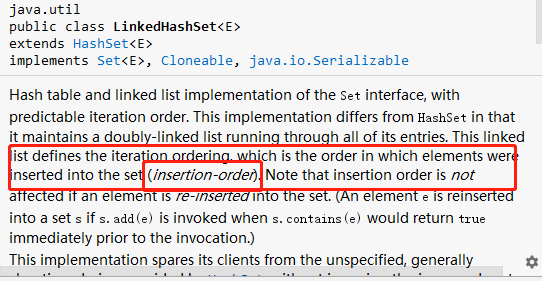
由于LinkedHashSet 的 iterator迭代方法是按插入顺序的,因此迭代到的第一个元素肯定是当前频次下,最久未访问的元素。这样的话,当缓存 cache满的时候,直接删除迭代到的第一个元素就可以了。
另外 freqMap,也需要在每次访问元素的时候,重新维护关系。从当前元素的频次对应的双向链表中移除当前元素,并加入到高频次的链表中。
public class LFUCache1 {public static void main(String[] args) {LFUCache1 cache = new LFUCache1(2);cache.put(1, 1);cache.put(2, 2);// 返回 1System.out.println(cache.get(1));cache.put(3, 3); // 去除 key 2// 返回 -1 (未找到key 2)System.out.println(cache.get(2));// 返回 3System.out.println(cache.get(3));cache.put(4, 4); // 去除 key 1// 返回 -1 (未找到 key 1)System.out.println(cache.get(1));// 返回 3System.out.println(cache.get(3));// 返回 4System.out.println(cache.get(4));}//缓存 cacheprivate Map<Integer,Node> cache;//存储频次和对应双向链表关系的mapprivate Map<Integer, LinkedHashSet<Node>> freqMap;private int capacity;private int size;//存储最小频次值private int min;public LFUCache1(int capacity) {this.capacity = capacity;cache = new HashMap<>();freqMap = new HashMap<>();}public int get(int key) {Node node = cache.get(key);if(node == null) return -1;//若找到当前元素,则频次加1freqInc(node);return node.value;}public void put(int key, int value) {if(capacity == 0) return;Node node = cache.get(key);if(node != null){node.value = value;freqInc(node);}else{if(size == capacity){Node deadNode = removeNode();cache.remove(deadNode.key);size --;}Node newNode = new Node(key,value);cache.put(key,newNode);addNode(newNode);size++;}}//处理频次mapprivate void freqInc(Node node){//从原来的频次对应的链表中删除当前nodeLinkedHashSet<Node> set = freqMap.get(node.freq);if(set != null)set.remove(node);//如果当前频次是最小频次,并且移除元素后,链表为空,则更新min值if(node.freq == min && set.size() == 0){min = node.freq + 1;}//添加到新的频次对应的链表node.freq ++;LinkedHashSet<Node> newSet = freqMap.get(node.freq);//如果高频次链表还未存在,则初始化一条if(newSet == null){newSet = new LinkedHashSet<Node>();freqMap.put(node.freq,newSet);}newSet.add(node);}//添加元素,更新频次private void addNode(Node node){//添加新元素,肯定是需要加入到频次为1的链表中的LinkedHashSet<Node> set = freqMap.get(1);if(set == null){set = new LinkedHashSet<>();freqMap.put(1,set);}set.add(node);//更新最小频次为1min = 1;}//删除频次最小,最久未访问的元素private Node removeNode(){//找到最小频次对应的 LinkedHashSetLinkedHashSet<Node> set = freqMap.get(min);//迭代到的第一个元素就是最久未访问的元素,移除之Node node = set.iterator().next();set.remove(node);//如果当前node的频次等于最小频次,并且移除元素之后,set为空,则 min 加1if(node.freq == min && set.size() == 0){min ++;}return node;}private class Node {int key;int value;int freq = 1;public Node(int key, int value){this.key = key;this.value = value;}public Node(){}}
}方案四:手动实现一个频次链表
思路:
由于方案三用的是JDK自带的 LinkedHashSet ,其是实现了哈希表和双向链表的一个类,因此为了减少哈希相关的计算,提高效率,我们自己实现一条双向链表来替代它。
那么,这条双向链表,就需要维护当前频次下的所有元素的先后访问顺序。我们采用头插法,把新加入的元素添加到链表头部,这样的话,最久未访问的元素就在链表的尾部。
同样的,我们也用两个哨兵节点来代表头尾节点,以方便链表的操作。
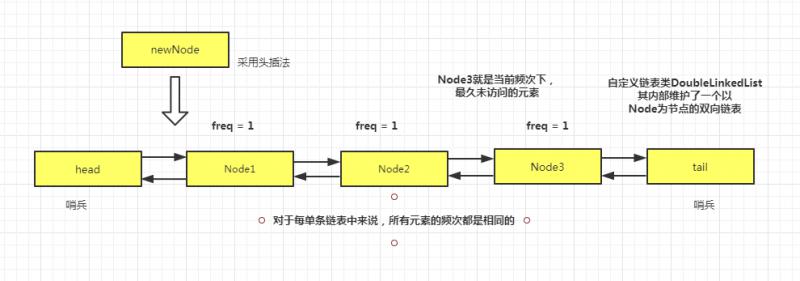
代码如下:
public class LFUCache2 {public static void main(String[] args) {LFUCache2 cache = new LFUCache2(2);cache.put(1, 1);cache.put(2, 2);// 返回 1System.out.println(cache.get(1));cache.put(3, 3); // 去除 key 2// 返回 -1 (未找到key 2)System.out.println(cache.get(2));// 返回 3System.out.println(cache.get(3));cache.put(4, 4); // 去除 key 1// 返回 -1 (未找到 key 1)System.out.println(cache.get(1));// 返回 3System.out.println(cache.get(3));// 返回 4System.out.println(cache.get(4));}private Map<Integer,Node> cache;private Map<Integer,DoubleLinkedList> freqMap;private int capacity;private int size;private int min;public LFUCache2(int capacity){this.capacity = capacity;cache = new HashMap<>();freqMap = new HashMap<>();}public int get(int key){Node node = cache.get(key);if(node == null) return -1;freqInc(node);return node.value;}public void put(int key, int value){if(capacity == 0) return;Node node = cache.get(key);if(node != null){node.value = value; //更新value值freqInc(node);}else{//若size达到最大值,则移除频次最小,最久未访问的元素if(size == capacity){//因链表是头插法,所以尾结点的前一个节点就是最久未访问的元素DoubleLinkedList list = freqMap.get(min);//需要移除的节点Node deadNode = list.tail.pre;cache.remove(deadNode.key);list.removeNode(deadNode);size--;}//新建一个node,并把node放到频次为 1 的 list 里面Node newNode = new Node(key,value);DoubleLinkedList newList = freqMap.get(1);if(newList == null){newList = new DoubleLinkedList();freqMap.put(1,newList);}newList.addNode(newNode);cache.put(key,newNode);size++;min = 1;//此时需要把min值重新设置为1}}//修改频次private void freqInc(Node node){//先删除node对应的频次listDoubleLinkedList list = freqMap.get(node.freq);if(list != null){list.removeNode(node);}//判断min是否等于当前node的频次,且当前频次的list为空,是的话更新min值if(min == node.freq && list.isEmpty()){min ++;}//然后把node频次加 1,并把它放到高频次listnode.freq ++;DoubleLinkedList newList = freqMap.get(node.freq);if(newList == null){newList = new DoubleLinkedList();freqMap.put(node.freq, newList);}newList.addNode(node);}private class Node {int key;int value;int freq = 1;Node pre;Node next;public Node(){}public Node(int key, int value){this.key = key;this.value = value;}}//自实现的一个双向链表private class DoubleLinkedList {Node head;Node tail;// 设置两个哨兵节点,作为头、尾节点便于插入和删除操作public DoubleLinkedList(){head = new Node();tail = new Node();head.next = tail;tail.pre = head;}//采用头插法,每次都插入到链表的最前面,即 head 节点后边public void addNode(Node node){node.pre = head;node.next = head.next;//注意先把head的后节点的前节点设置为nodehead.next.pre = node;head.next = node;}//删除元素public void removeNode(Node node){node.pre.next = node.next;node.next.pre = node.pre;}//判断是否为空,即是否存在除了哨兵节点外的有效节点public boolean isEmpty(){//判断头结点的下一个节点是否是尾结点,是的话即为空return head.next == tail;}}}方案五:用双向链表嵌套
思路:
可以发现方案三和方案四,都是用 freqmap 来存储频次和它对应的链表之间的关系,它本身也是一个哈希表。这次,我们完全用自己实现的双向链表来代替 freqMap,进一步提高效率。
但是,结构有些复杂,它是一个双向链表中,每个元素又是双向链表。为了便于理解,我把它的结构作图如下:(为了方便,分别叫做外层链表,内层链表)
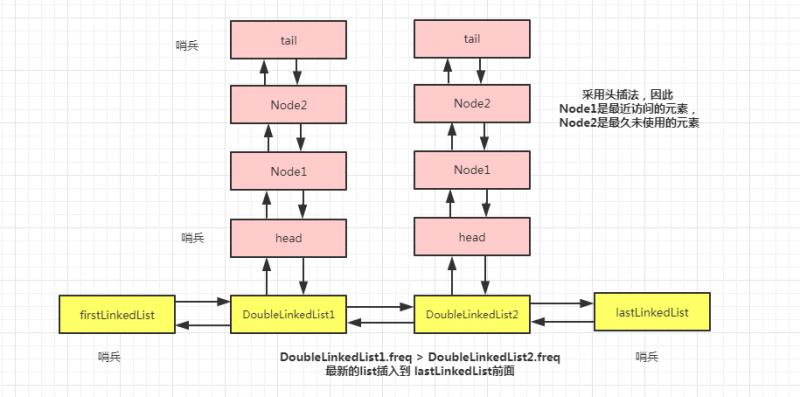
我们把整体看成一个由 DoubleLinkedList组成的双向链表,然后,每一个 DoubleLinkedList 对象中又是一个由 Node 组成的双向链表。像极了 HashMap 数组加链表的形式。
但是,我们这里没有数组,也就不存在哈希碰撞的问题。并且都是双向链表,都有哨兵存在,便于灵活的从链表头部或者尾部开始操作元素。
这里,firstLinkedList 和 lastLinkedList 分别代表外层链表的头尾结点。链表中的元素 DoubleLinkedList 有一个字段 freq 记录了频次,并且按照前大后小的顺序组成外层链表,即图中的 DoubleLinkedList1.freq 大于它后面的 DoubleLinkedList2.freq。
每当有新频次的 DoubleLinkedList 需要添加进来的时候,直接插入到 lastLinkedList 这个哨兵前面,因此 lastLinkedList.pre 就是一个最小频次的内部链表。
内部链表中是由 Node组成的双向链表,也有两个哨兵代表头尾节点,并采用头插法。其实,可以看到内部链表和方案四,图中所示的双向链表结构是一样的,不用多说了。
这样的话,我们就可以找到频次最小,并且最久未访问的元素,即
//频次最小,最久未访问的元素,cache满时需要删除
lastLinkedList.pre.tail.pre于是,代码就好理解了:
public class LFUCache3 {public static void main(String[] args) {LFUCache3 cache = new LFUCache3(2);cache.put(1, 1);cache.put(2, 2);// 返回 1System.out.println(cache.get(1));cache.put(3, 3); // 去除 key 2// 返回 -1 (未找到key 2)System.out.println(cache.get(2));// 返回 3System.out.println(cache.get(3));cache.put(4, 4); // 去除 key 1// 返回 -1 (未找到 key 1)System.out.println(cache.get(1));// 返回 3System.out.println(cache.get(3));// 返回 4System.out.println(cache.get(4));}Map<Integer,Node> cache;/*** 这两个代表的是以 DoubleLinkedList 连接成的双向链表的头尾节点,* 且为哨兵节点。每个list中,又包含一个由 node 组成的一个双向链表。* 最外层双向链表中,freq 频次较大的 list 在前面,较小的 list 在后面*/DoubleLinkedList firstLinkedList, lastLinkedList;int capacity;int size;public LFUCache3(int capacity){this.capacity = capacity;cache = new HashMap<>();//初始化外层链表的头尾节点,作为哨兵节点firstLinkedList = new DoubleLinkedList();lastLinkedList = new DoubleLinkedList();firstLinkedList.next = lastLinkedList;lastLinkedList.pre = firstLinkedList;}//存储具体键值对信息的nodeprivate class Node {int key;int value;int freq = 1;Node pre;Node next;DoubleLinkedList doubleLinkedList;public Node(){}public Node(int key, int value){this.key = key;this.value = value;}}public int get(int key){Node node = cache.get(key);if(node == null) return -1;freqInc(node);return node.value;}public void put(int key, int value){if(capacity == 0) return;Node node = cache.get(key);if(node != null){node.value = value;freqInc(node);}else{if(size == capacity){/*** 如果满了,则需要把频次最小的,且最久未访问的节点删除* 由于list组成的链表频次从前往后依次减小,故最小的频次list是 lastLinkedList.pre* list中的双向node链表采用的是头插法,因此最久未访问的元素是 lastLinkedList.pre.tail.pre*///最小频次listDoubleLinkedList list = lastLinkedList.pre;//最久未访问的元素,需要删除Node deadNode = list.tail.pre;cache.remove(deadNode.key);list.removeNode(deadNode);size--;//如果删除deadNode之后,此list中的双向链表空了,则删除此listif(list.isEmpty()){removeDoubleLinkedList(list);}}//没有满,则新建一个nodeNode newNode = new Node(key, value);cache.put(key,newNode);//判断频次为1的list是否存在,不存在则新建DoubleLinkedList list = lastLinkedList.pre;if(list.freq != 1){DoubleLinkedList newList = new DoubleLinkedList(1);addDoubleLinkedList(newList,list);newList.addNode(newNode);}else{list.addNode(newNode);}size++;}}//修改频次private void freqInc(Node node){//从当前频次的list中移除当前 nodeDoubleLinkedList list = node.doubleLinkedList;if(list != null){list.removeNode(node);}//如果当前list中的双向node链表空,则删除此listif(list.isEmpty()){removeDoubleLinkedList(list);}//当前node频次加1node.freq++;//找到当前list前面的list,并把当前node加入进去DoubleLinkedList preList = list.pre;//如果前面的list不存在,则新建一个,并插入到由list组成的双向链表中//前list的频次不等于当前node频次,则说明不存在if(preList.freq != node.freq){DoubleLinkedList newList = new DoubleLinkedList(node.freq);addDoubleLinkedList(newList,preList);newList.addNode(node);}else{preList.addNode(node);}}//从外层双向链表中删除当前list节点public void removeDoubleLinkedList(DoubleLinkedList list){list.pre.next = list.next;list.next.pre = list.pre;}//知道了它的前节点,即可把新的list节点插入到其后面public void addDoubleLinkedList(DoubleLinkedList newList, DoubleLinkedList preList){newList.pre = preList;newList.next = preList.next;preList.next.pre = newList;preList.next = newList;}//维护一个双向DoubleLinkedList链表 + 双向Node链表的结构private class DoubleLinkedList {//当前list中的双向Node链表所有频次都相同int freq;//当前list中的双向Node链表的头结点Node head;//当前list中的双向Node链表的尾结点Node tail;//当前list的前一个listDoubleLinkedList pre;//当前list的后一个listDoubleLinkedList next;public DoubleLinkedList(){//初始化内部链表的头尾节点,并作为哨兵节点head = new Node();tail = new Node();head.next = tail;tail.pre = head;}public DoubleLinkedList(int freq){head = new Node();tail = new Node();head.next = tail;tail.pre = head;this.freq = freq;}//删除当前list中的某个node节点public void removeNode(Node node){node.pre.next = node.next;node.next.pre = node.pre;}//头插法将新的node插入到当前list,并在新node中记录当前list的引用public void addNode(Node node){node.pre = head;node.next = head.next;head.next.pre = node;head.next = node;node.doubleLinkedList = this;}//当前list中的双向node链表是否存在有效节点public boolean isEmpty(){//只有头尾哨兵节点,则说明为空return head.next == tail;}}}由于,此方案全是链表的增删操作,因此时间复杂度可到 O(1)。
结语
终于总结完了,其实,感觉思想搞明白了,代码实现起来就相对容易一些。但是,还是需要多写,多实践。过段时间再来回顾一下~
